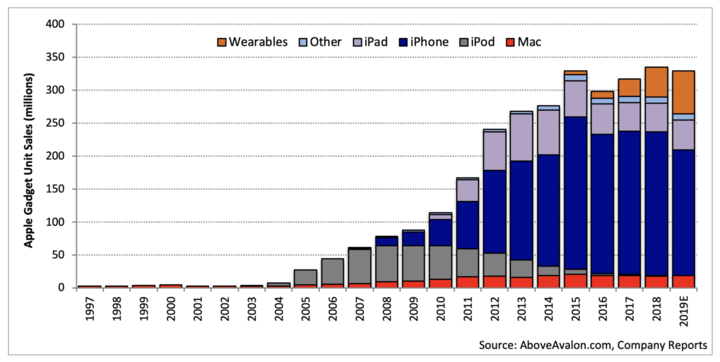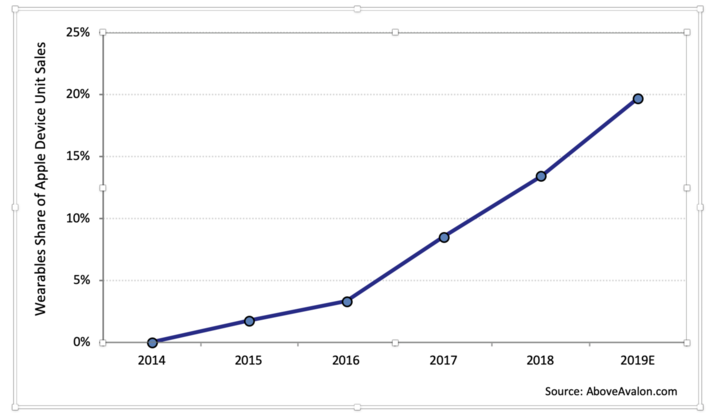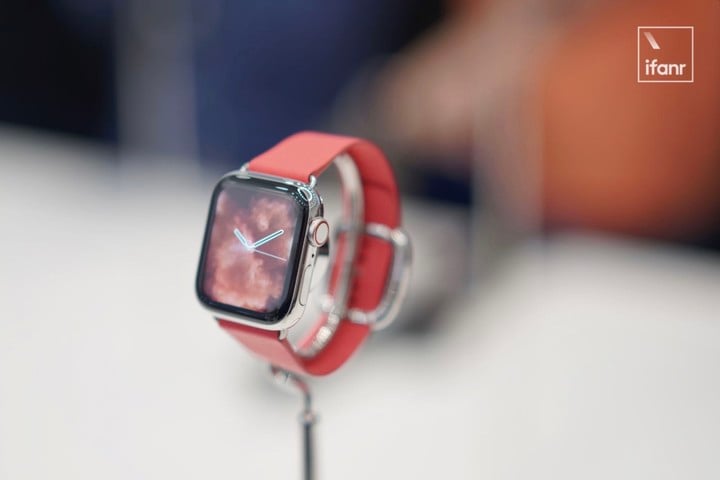If you do a core business for Apple now, you can list more than just the iPhone, iPad and Mac.
Since the iPhone sales are cold, this year Apple is paying more attention to the service business. For this reason, Apple held a “service conference” at the beginning of the year with no hardware dedicated to video and audio, news magazines and games. To emphasize the importance attached to the service business.
But outside of the various services, Apple’s wearables are also worth our attention.

“The service business is seen as Apple’s next growth engine, which has caused many people to focus on the service line, but has ignored the growth potential of Apple’s wearable devices.”
At present, Apple has never announced the specific sales figures of Apple Watch and AirPods, but classified them as “wearable devices, homes and accessories”, which includes smart watches and headphones. Speakers, protective cases and data lines are the reasons why analysts have difficulty evaluating this product line.
Based on last quarter’s earnings data, this part of the business camp The revenue reached US$5.5 billion, a growth rate of 48%.
But if you just divide the Apple Watch and AirPods devices, the growth rate will exceed 50%. This number has been mentioned by Cook many times in the past two quarters.
And Neil Cybart gives three conclusions based on the financial model he built:
1. Nearly one-fifth of all the devices sold by Apple this year are from wearables, and this percentage is growing.
2. At present, the annual sales volume of Apple wearable devices is about 70 million, and only 60 million of them are Apple Watch and AirPods.
3. ASP (average selling price) growth from Apple Watch and AirPods has also brought higher sales to Apple

▲ Wearables account for an increasing share of total Apple device sales. Image from: Neil Cybart

▲ Currently, nearly one-fifth of Apple’s device sales come from wearables. Image from: Neil Cybart
In his view, the rapid growth of Apple Watch and AirPods is mainly due to Apple’s huge iPhone user base, coupled with the multi-device linkage ecosystem, which is self-serviceable. The equipment business provides a good foundation for development.

▲ During the fiscal season, Apple Watch and AirPods in the past 12 months Forecast sales figures and increases
At the same time, Apple Watch and AirPods will soon receive more than 100 million device installation bases. By the first quarter of 2019, Apple Watch’s cumulative sales have reached 68 million, while AirPods has nearly 42 million. Cumulative sales (it’s sold for half less time than Apple Watch).
In contrast, the current total number of active Apple devices in the global market is 1.4 billion, of which 900 million are iPhones.

Another trend is that in the foreseeable future, Apple Watch and AirPods will no longer use “Connect iPhone” as a hard requirement, but will gradually get rid of the “accessory” positioning and become a completely independent smart device.
In the past, we used to think that Apple’s Apple Watch, AirPods and HomePod products were all built to build a moat for the iPhone and boost its sales.
But now, the threat of Apple’s growth has become the iPhone itself, and the possibility of Apple jumping out of the iPhone to find a new path is growing.
As evidence, Apple has given Apple Watch the ability to independently download third-party applications in the latest watchOS 6 system, and has added support for “Siri” voice to AirPods, both of which are constantly reducing the iPhone. rely.
Neil Cybart finally stressed that Apple is currently developing two sensory systems for the human body – our wrists and ears, but in the field of wearable devices, the most promising part is the eye, which will become Apple’s next A goal.
Source: Knowtechie